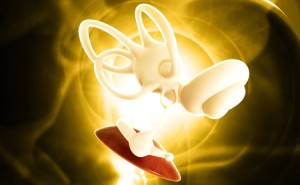Dizziness and Vertigo/Vestibular Disorders
 Vertigo, imbalance, dizziness, nausea, and blurred vision are the most common symptoms of vestibular disorders. This condition can occur with inner ear problems (inner ear infection, Meniere’s disease, vestibular neuritis, BPPV), atypical migraine (vestibular migraine), cervicogenic dizziness (dizziness coming from the neck), head injury, and concussion. For many people, no specific cause is identified, and all medical tests can be normal. Vestibular rehabilitation is highly effective in resolving these symptoms, and is far more effective than medication. The brain has tremendous flexibility to relearn all functions of orientation, gaze stability, and balance. For many people, the brain needs vestibular rehabilitation to trigger this process for recovery. On your first visit, specific tests are carefully chosen based on your medical history, symptom type/intensity, tolerance to motion, and your overall condition. The pace and duration of the sessions are matched to your level of comfort and tolerance. You will learn about all the functions of your balance system, and what specifically is causing your symptoms. Education in the workings of your eyes, ears, and body sensors for balance and orientation helps you gain complete understanding of your symptoms. If you choose, we will also address nutrition and overall fitness. Particular exercises are prescribed for each individual, ensuring that you have the most effective and efficient recovery. Guidelines are provided, so you can tolerate the therapy exercises, without disruption to your daily life. Timelines for recovery are addressed, so you know what to expect regarding the duration and frequency of your Physical Therapy. Most people have clinic sessions every 2 weeks, and perform the exercises at home daily. Clinic sessions can be more or less frequent, depending on your condition, lifestyle, and distance from the clinic. Success rates for vestibular rehabilitation are 90% in three months or less.
Vertigo, imbalance, dizziness, nausea, and blurred vision are the most common symptoms of vestibular disorders. This condition can occur with inner ear problems (inner ear infection, Meniere’s disease, vestibular neuritis, BPPV), atypical migraine (vestibular migraine), cervicogenic dizziness (dizziness coming from the neck), head injury, and concussion. For many people, no specific cause is identified, and all medical tests can be normal. Vestibular rehabilitation is highly effective in resolving these symptoms, and is far more effective than medication. The brain has tremendous flexibility to relearn all functions of orientation, gaze stability, and balance. For many people, the brain needs vestibular rehabilitation to trigger this process for recovery. On your first visit, specific tests are carefully chosen based on your medical history, symptom type/intensity, tolerance to motion, and your overall condition. The pace and duration of the sessions are matched to your level of comfort and tolerance. You will learn about all the functions of your balance system, and what specifically is causing your symptoms. Education in the workings of your eyes, ears, and body sensors for balance and orientation helps you gain complete understanding of your symptoms. If you choose, we will also address nutrition and overall fitness. Particular exercises are prescribed for each individual, ensuring that you have the most effective and efficient recovery. Guidelines are provided, so you can tolerate the therapy exercises, without disruption to your daily life. Timelines for recovery are addressed, so you know what to expect regarding the duration and frequency of your Physical Therapy. Most people have clinic sessions every 2 weeks, and perform the exercises at home daily. Clinic sessions can be more or less frequent, depending on your condition, lifestyle, and distance from the clinic. Success rates for vestibular rehabilitation are 90% in three months or less.

